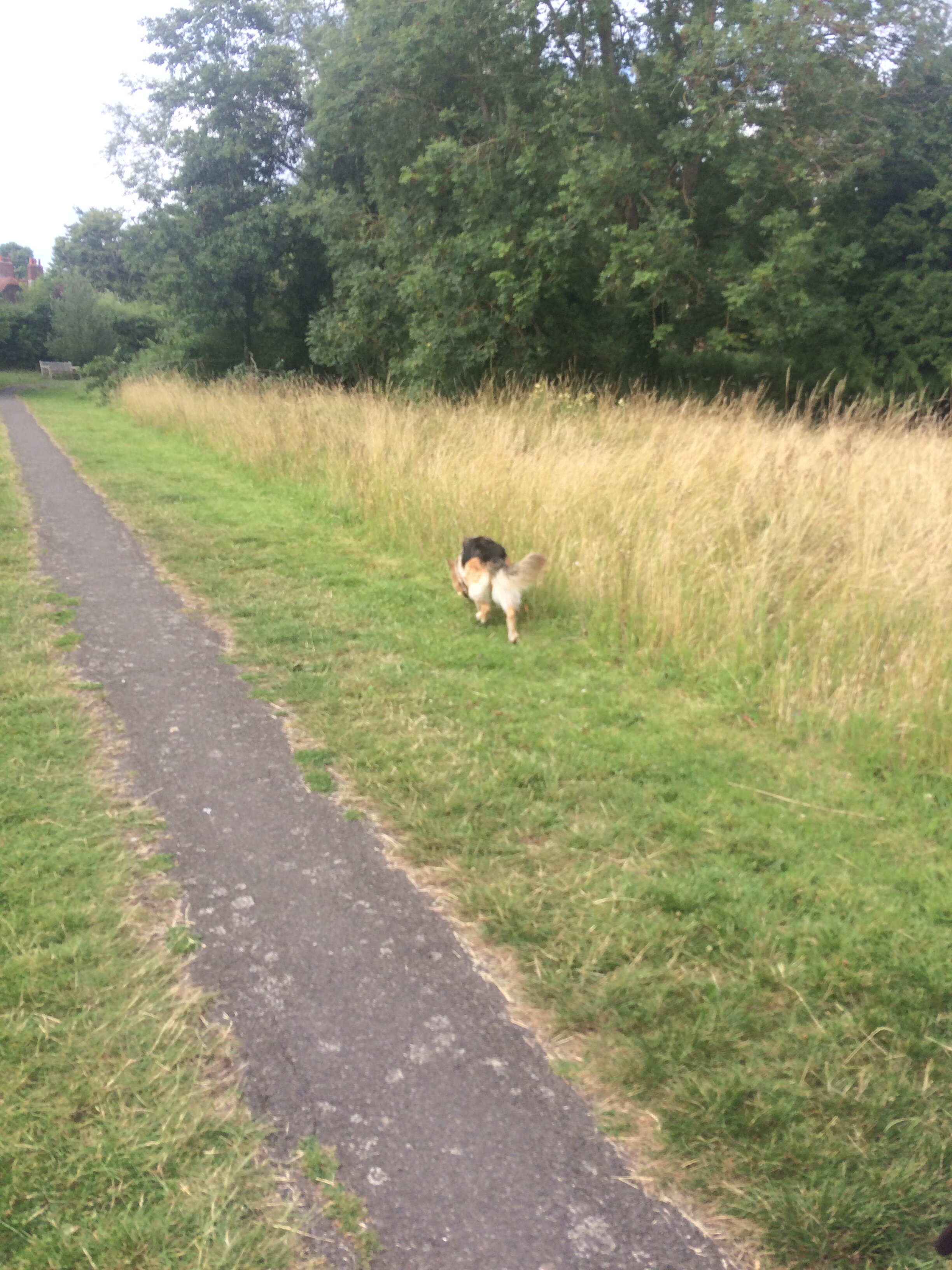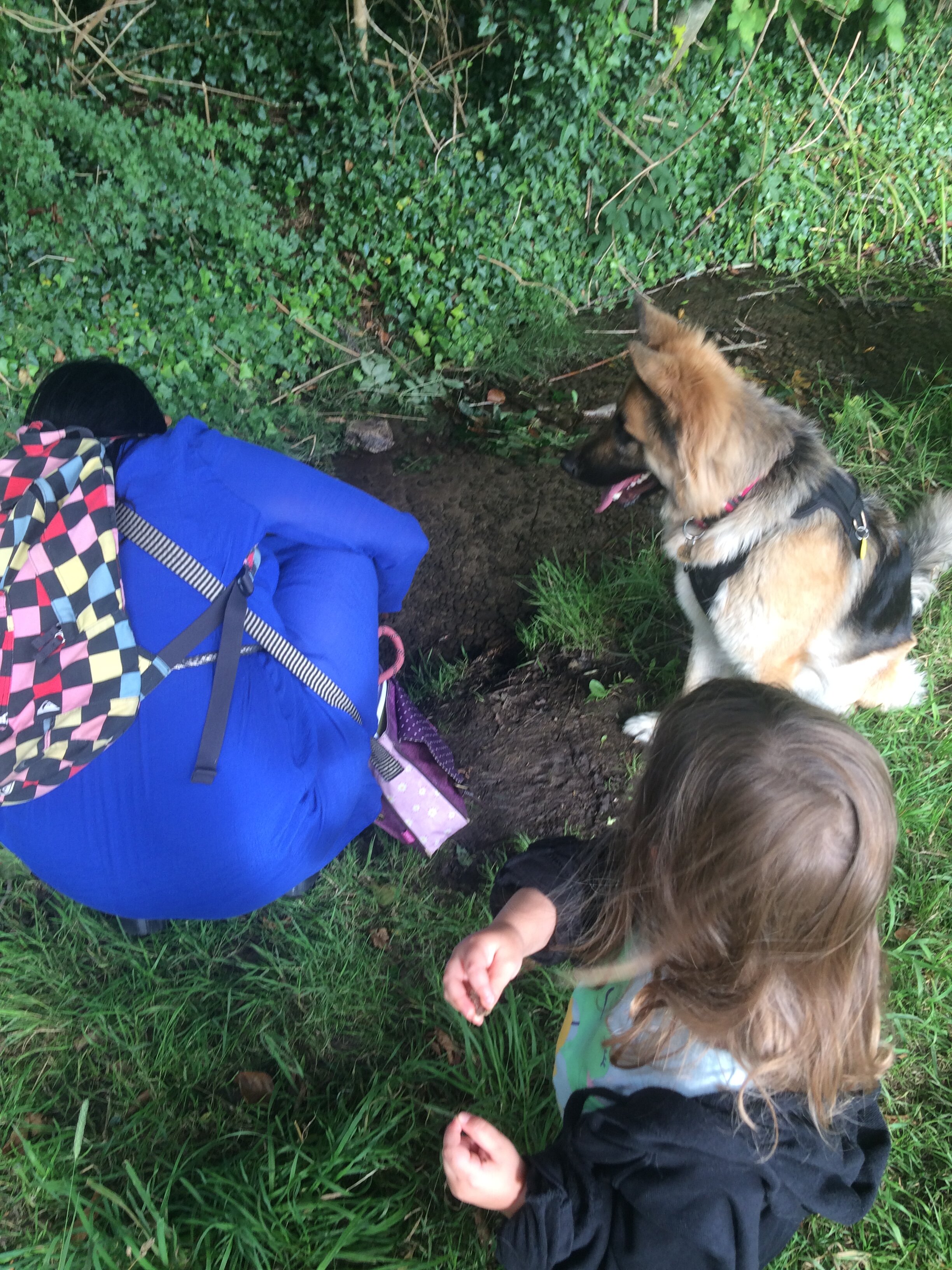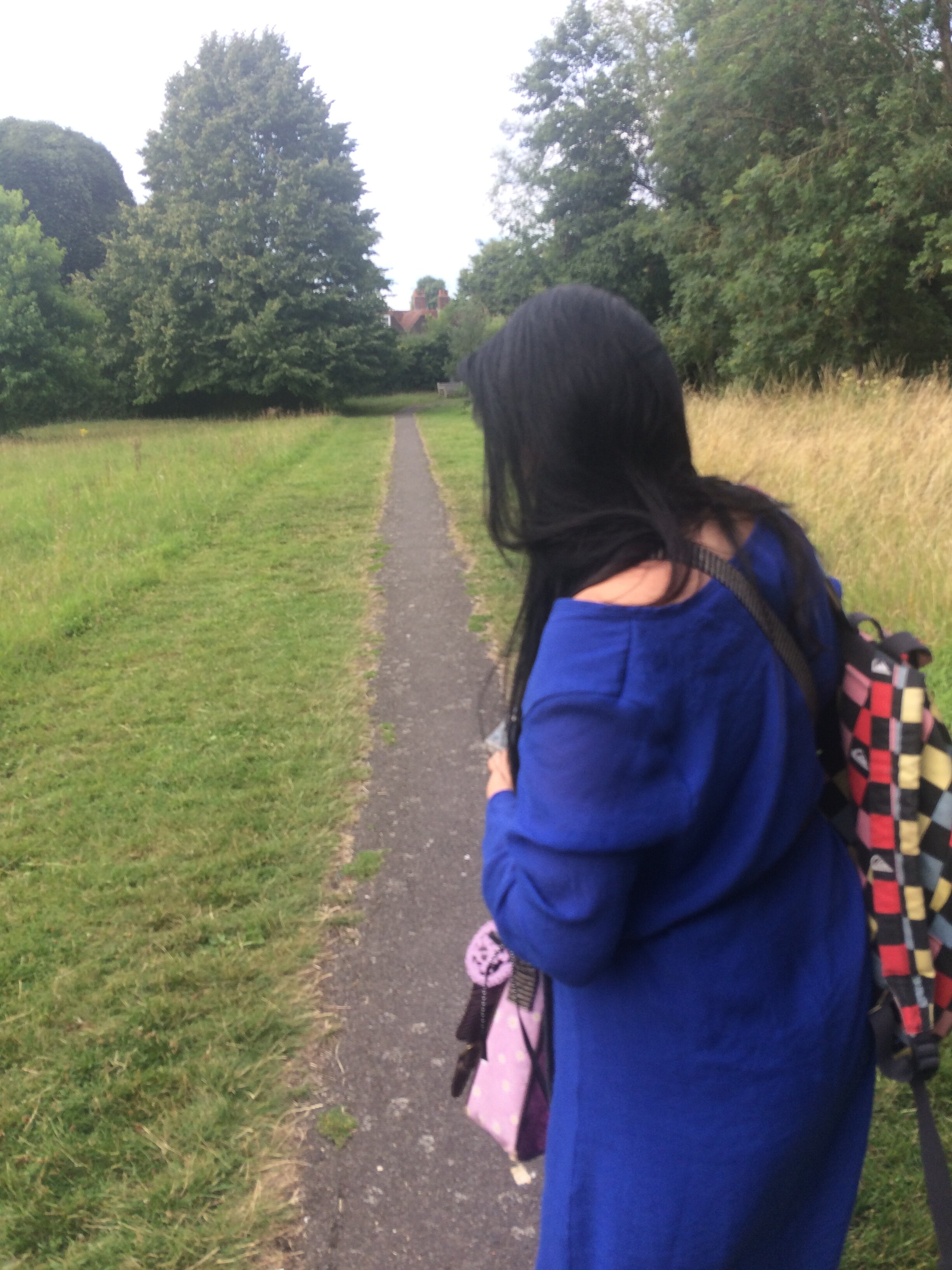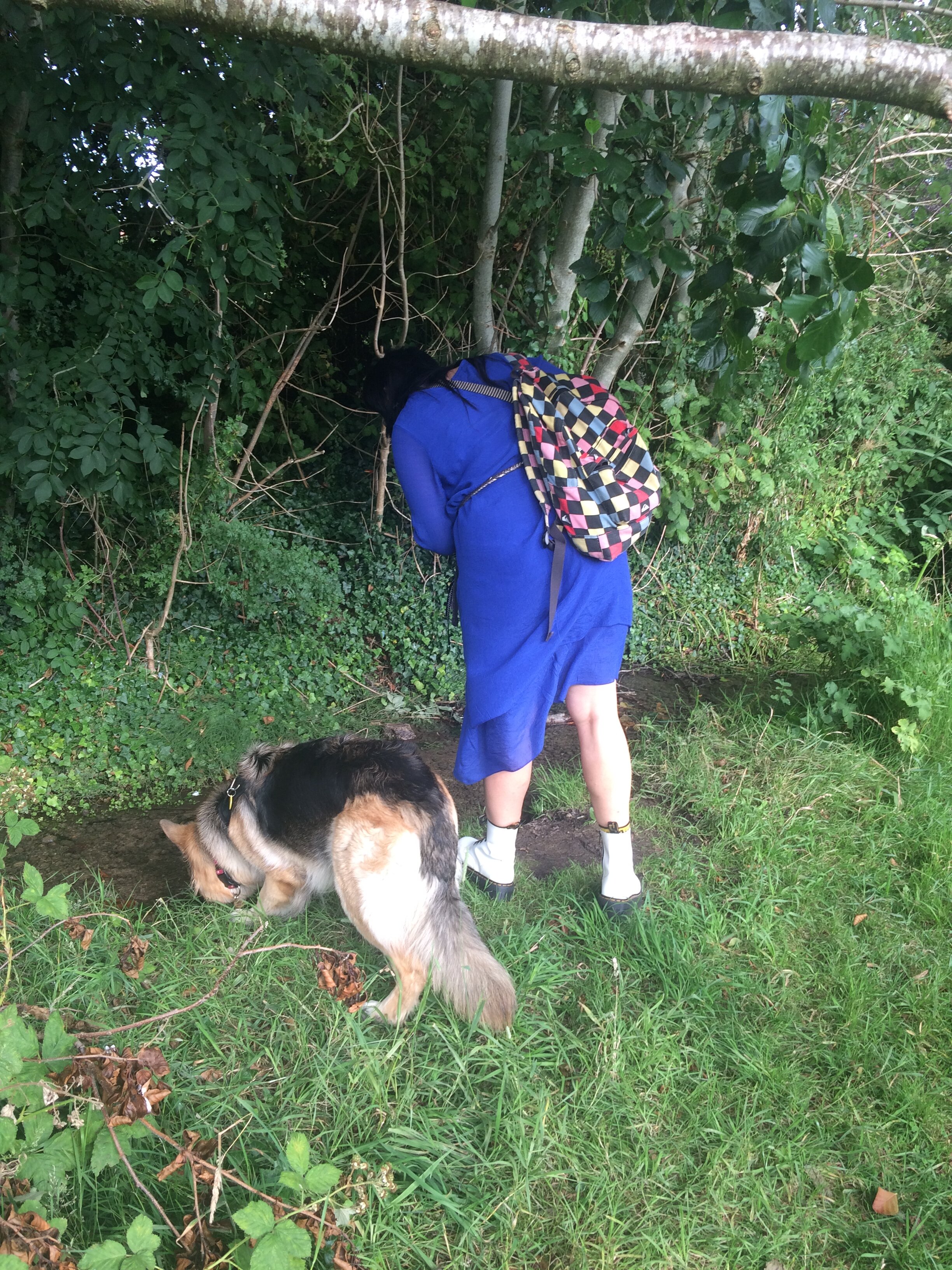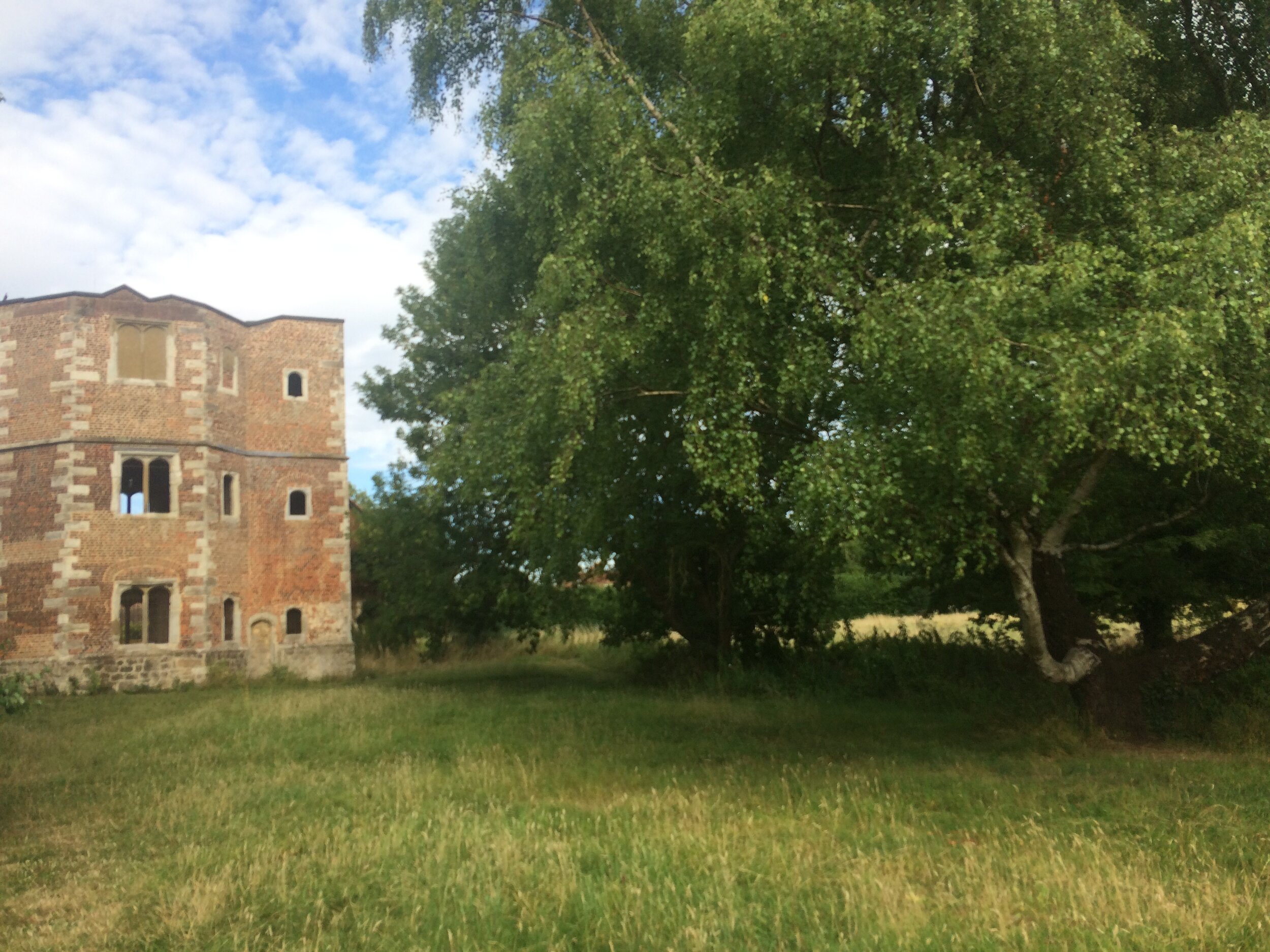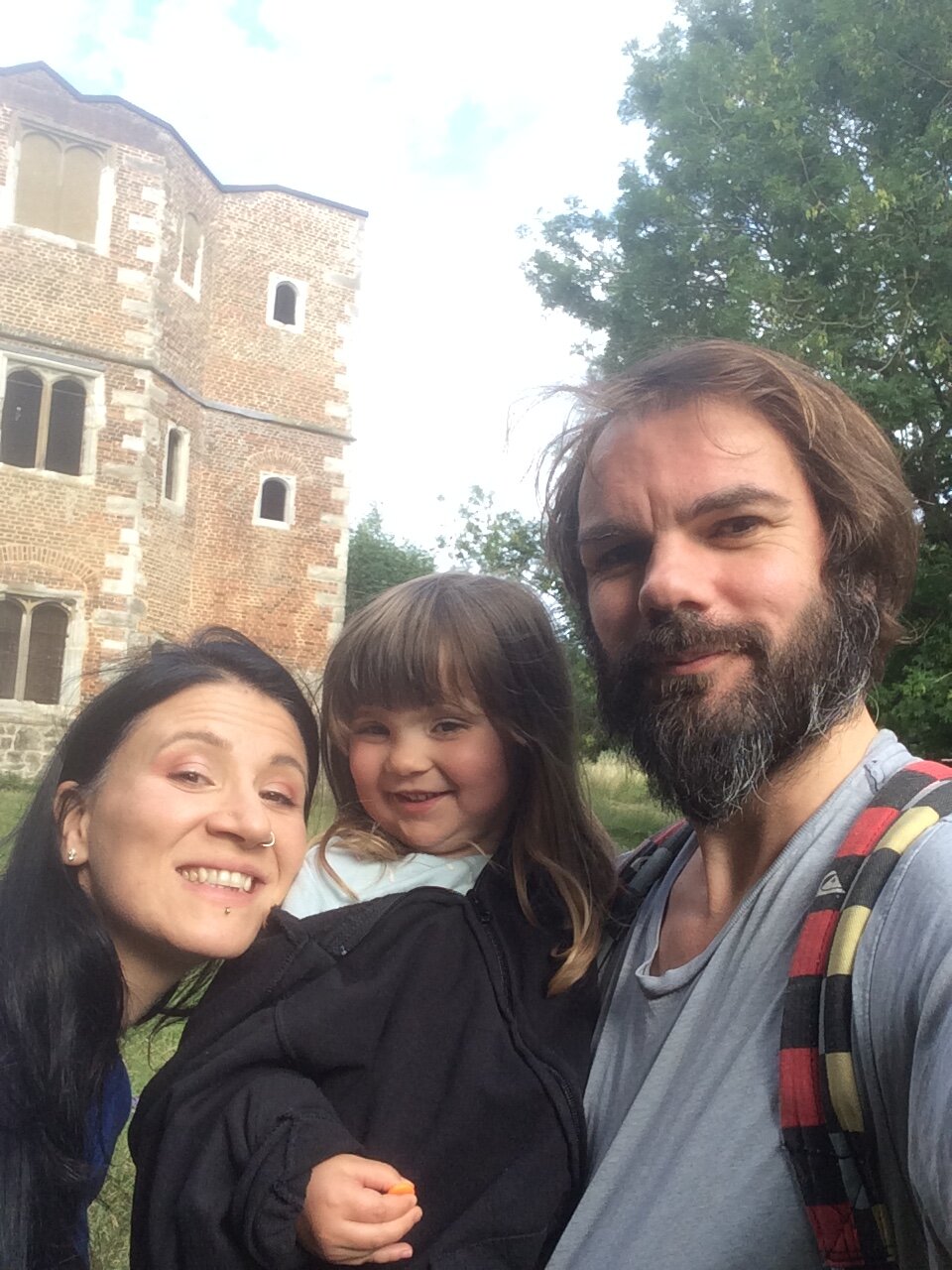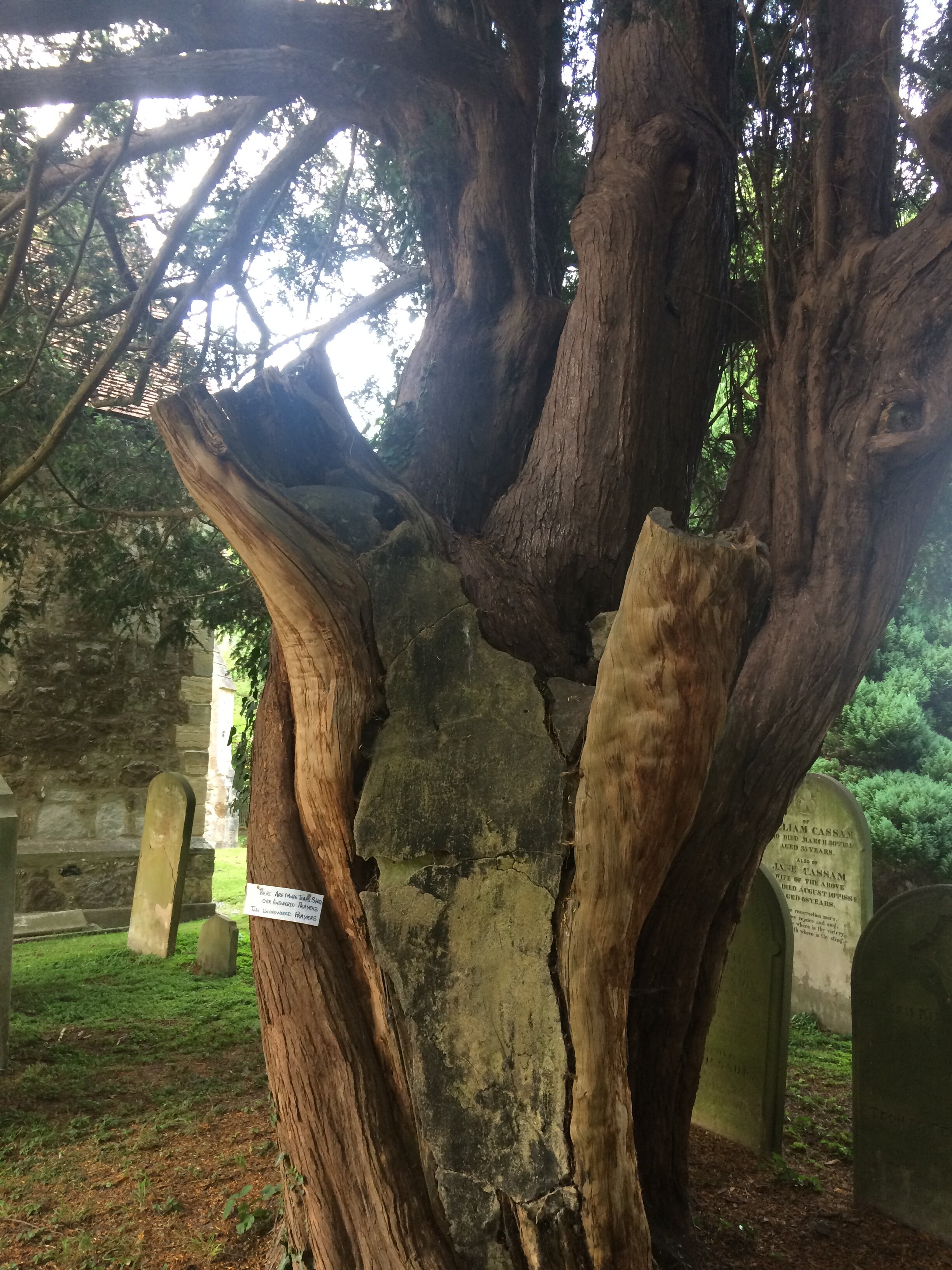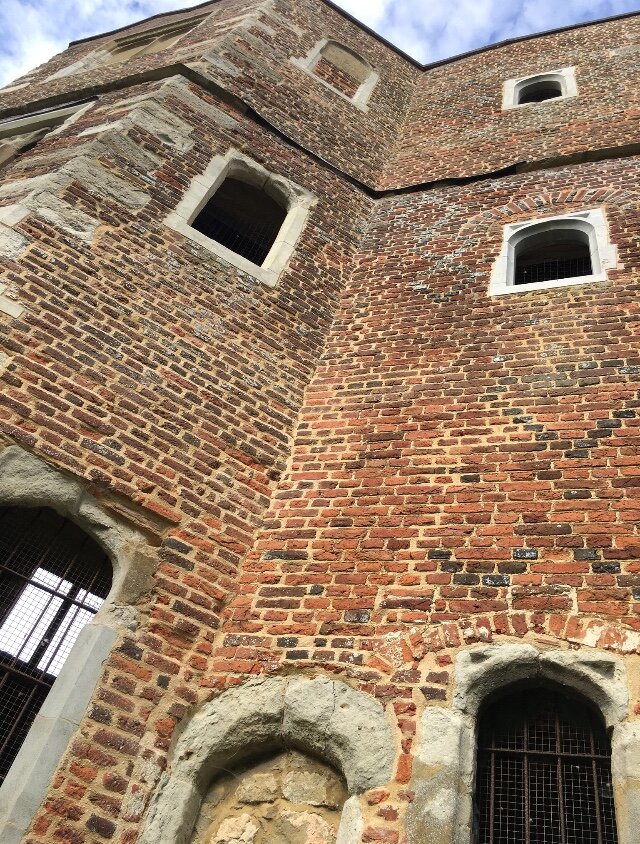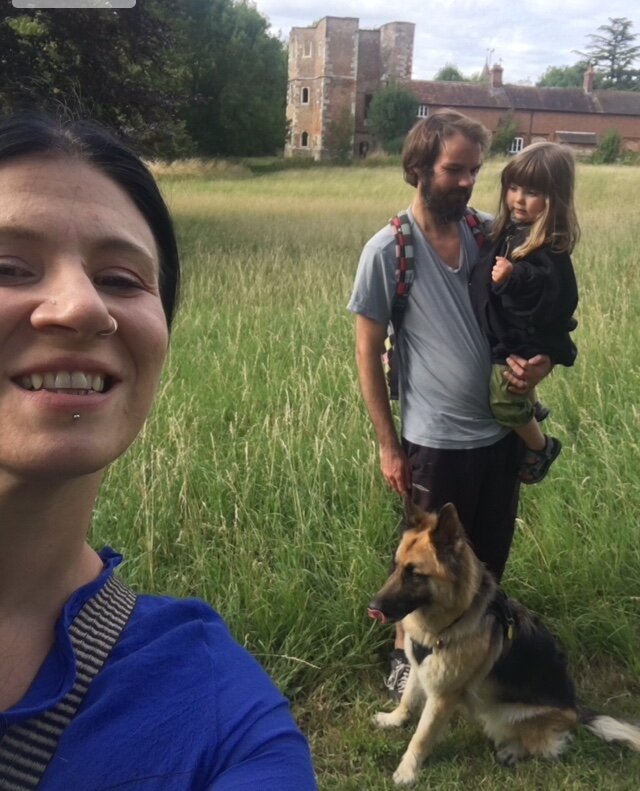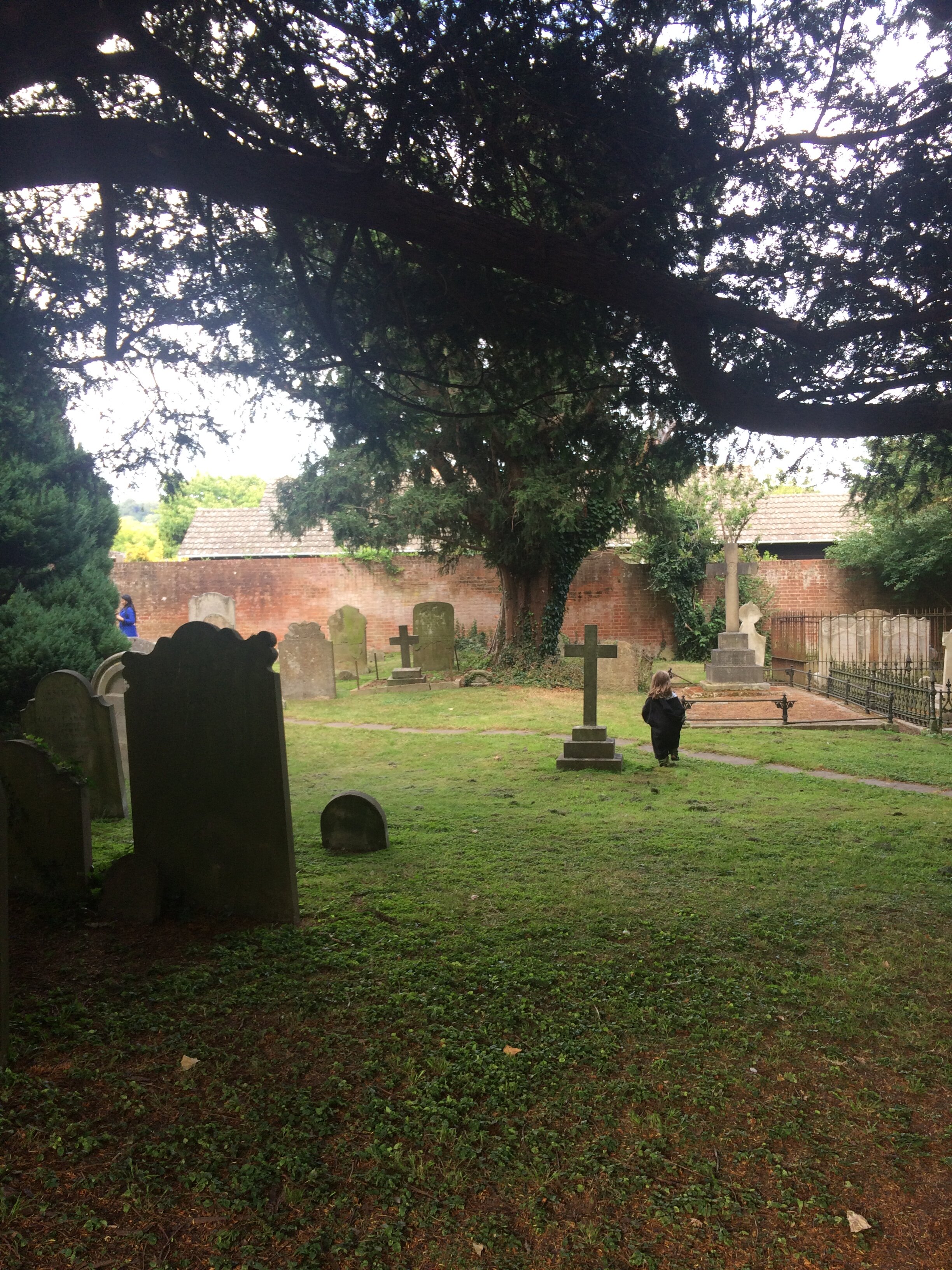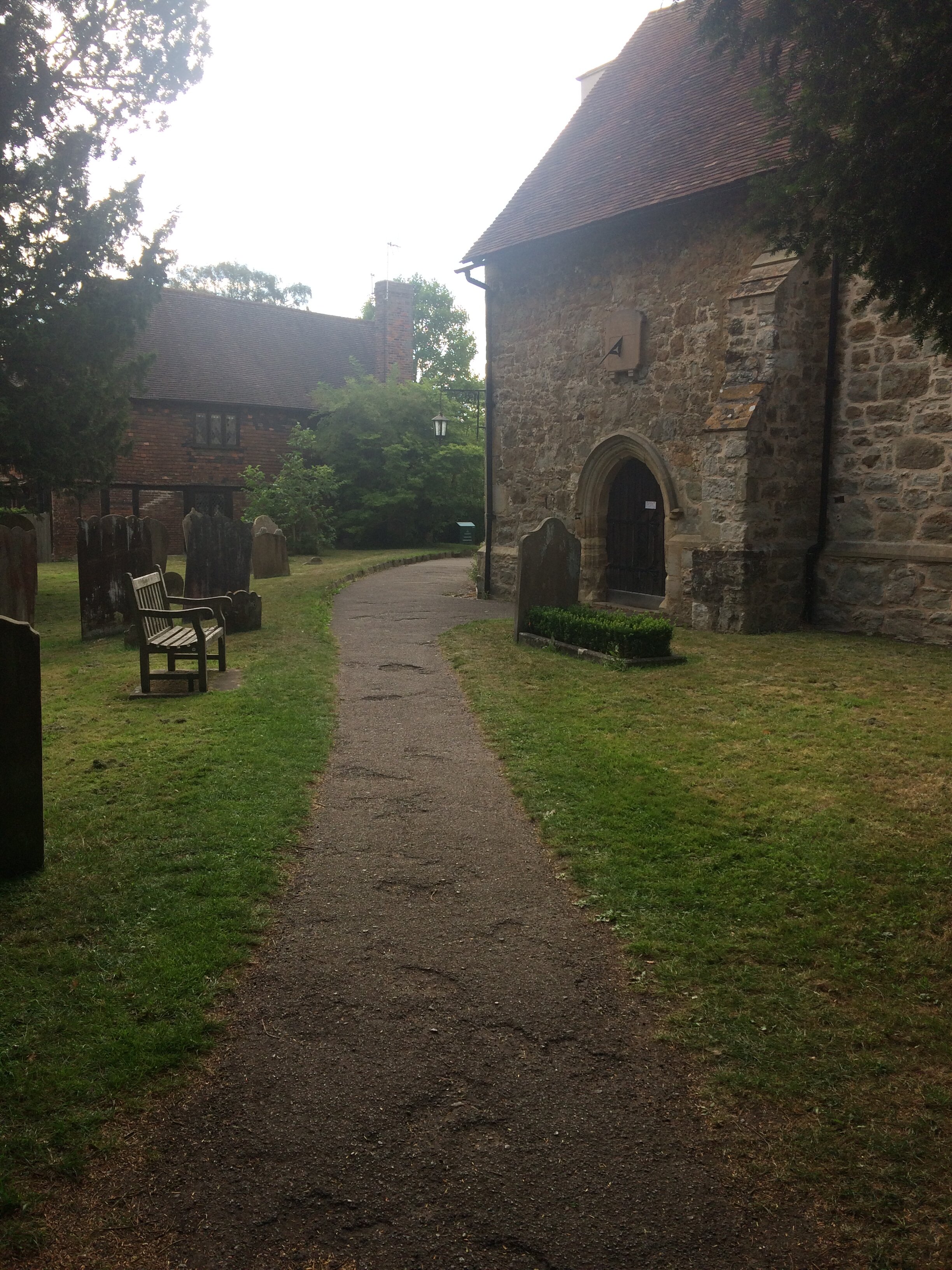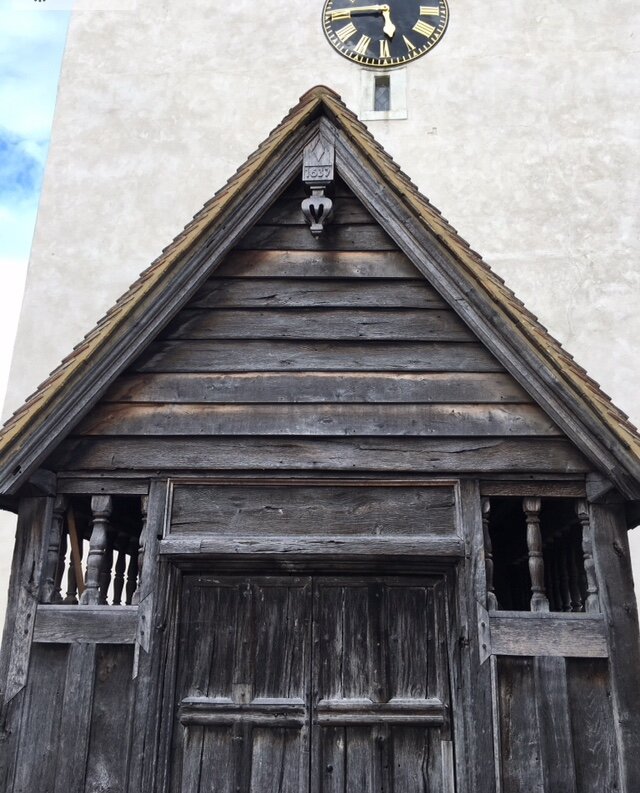There was a place, an incredulous place, where Medieval Kings fled to escape plague, where Tudor Monarchs arrived to enjoy lavish parties, a place that centuries of spiritual leaders could call home. It was a haven for the affluent and important, the perfect country escape, a renaissance palace said to be the grandest in all of Europe...
So why did it no longer exist?
Today we set off to find out!
On specific research purposes, we embarked upon an excursion to a little village near Sevenoaks in Kent. During some of our previous exploits, we had explored a number of stunning sites in the vicinity. Knole, Oldbury Hillfort and Ightham Mote are all within touching distance of the quaint and picturesque town of Sevenoaks; its historical importance was well established.
Today we were on the hunt for Otford Palace.
Emily Archaeomum had been tasked by a television production company to seek out potential sites in which community garden archaeology might unearth interesting results. Fortuitously, we had recently noticed a fascinating article detailing a spectacular monument which once resided in the now sleepy village of Otford.
The site was less than half an hour drive from our little home so we made preparations for a voyage of reconnaissance. Audrey assisted by packing essentials such as her spinny wand, little penguin and a selection of unusual stones collected on earlier voyages, presumably for comparative purposes. We loaded the trusty transport and set out on our adventure.
Located on the river Darent, the village of Otford is straight-off-a postcard pretty. The town square boasts an impressive church with origins in the 11th century, a delightful selection of rustic pubs, a hodgepodge of ancient character brimming architecture and a sweet award-winning pond/roundabout... thing!
The known history of Otford stretches back at least 20,000 years with flint implements discovered in the locale, alongside later Neolithic pottery. A middle Bronze Age cremation Urn was discovered below a round barrow on Otford Mount suggesting a more settled community at this time. The Iron Age produced evidence of farming, occupation and even a possible Hillfort on the mount.
During the Roman period, Otford enjoyed the construction of at least two luxurious villas, one of which was more than twice the size of nearby Lullingstone Roman Villa, which you may recall we had explored on an earlier adventure. This was an interesting and early indication of the fertile and lucrative position of the village.
It was from the Anglo Saxon period, however, that Otford became a seat of great power and importance. King Offa of Mercia is believed to have fought Egbert, King of Kent at the battle of Otford. King Cenulf of Mercia would later present the estate to the Archbishop Wulfred. From this moment until 1537, Otford Palace was one of a chain of houses for the Archbishops of Canterbury. The Manor House became one of the most magnificent buildings in medieval England, where a succession of Archbishops welcomed most of the Kings and Queens of the country.
At another Battle of Otford, this one in 1016, the monk John of Worcester wrote that Edmund Ironside had brought his army to Kent to fight the Danes. Edmund overcame Cnut’s Danish armies here and forced them to flee to the Isle of Sheppey.
One of the most famous residents of Otford was Thomas Becket, the hair shirted Archbishop who would later be canonized following his martyrdom. A nearby well is dedicated to Saint Thomas Becket. A local legend tells of the saint striking the ground with his staff and a miraculous spring emerging from the very spot. The pilgrim’s way, a historic worshipful route from Winchester to the shrine of Becket in Canterbury Cathedral where he met his grizzly end, passes directly through Otford.
During the 14th century, as the Black Death ravaged London, the fearsome medieval monarch, Edward III, escaped the crowded city and resided at Otford over Christmas to avoid infection. It is said he spent his time at Otford decadently despite the pestilence sweeping the globe.
In 1514, Archbishop William Warham replaced the existing ecclesiastical building with the earliest fabulous formations of Otford Palace. In 1519, King Henry VIII stayed at the palace. He hunted in the great deer park of the estate and is said to have enjoyed it so much that he returned just a year later on his route to the famous field of cloth and gold meeting with King Francis in France. The palace, said to rival even Hampton Court, was eventually gifted to Henry in 1537 by Archbishop Thomas Cranmer.
As a princess, Bloody Mary spent a year at the palace, avoiding the political and religious turmoil which had arisen due to Henry’s separation from her mother, Catherine of Aragon. When Henry died, the palace fell to ruin. Elizabeth I had no interest in the monumental historic house and it was mostly broken up for the scattered building of surrounding projects.
To begin our investigations, we explored the neighbourhood, witnessing the beautiful cosy homesteads now occupying the ancient site. Parking was fairly easy to find, and the pavements all seemed to lead invitingly to the centre of the phantom palace. Audrey had dozed off en route, so our arrival at the palace was met with some opposition by a slightly grumpy, seriously snoozy little explorer. Her spirits soon soared as we spied the enticing nature trails and splendid palace remains.
The surviving structures include the north-west tower, the lower storey of an adjoining gallery and a fragment of the great gatehouse with further sections of wall appearing in private gardens. The size of the whole complex covers around four acres. As ever, Bramble led the way, carefully sniffing out any potential dangers as we approached. Most of the palace site is now a communal garden area, particularly the old courtyard. It is delightfully maintained, with a sweet scented orchard and grassy fields full of wild flowers to wistfully wander through at your leisure.
The remains of the palace itself were a ghostly delight to explore. Though limited remnants survive, they offer a good indication of what would once have been a spectacular sight, contemporary Tudor architecture at its finest. We casually covered the limits of the public spaces, making our way past countless period homes renovated and renewed to house the modern occupants of Otford. We detoured through the atmospheric cemetery and imposing church back to the village centre. The village was quiet, the air fresh and calm. It was a dreamy little stroll through a world straight from the pages of a fantasy novel.
Our reconnaissance complete, notes and photographs taken and exploration enjoyed, we decided to call it a day. In usual circumstances, we would have dropped into one of the delightful public houses for a celebratory drink. This being the year of pandemic however, we made the sensible decision to settle for a quick stop at the local shop for some cold beers and snacks before heading home.
It was clear this beautiful little picturesque piece of England would have made for spectacular TV. Its vibrant history coupled with stunning scenic splendour was made to fuel the imagination of the world. No doubt, the phantoms and enchantment of Otford will one day captivate countless communities on a similar scale to that which its predecessors entertained, for now, it remains a perfect tranquil escape with a wondrous past.


